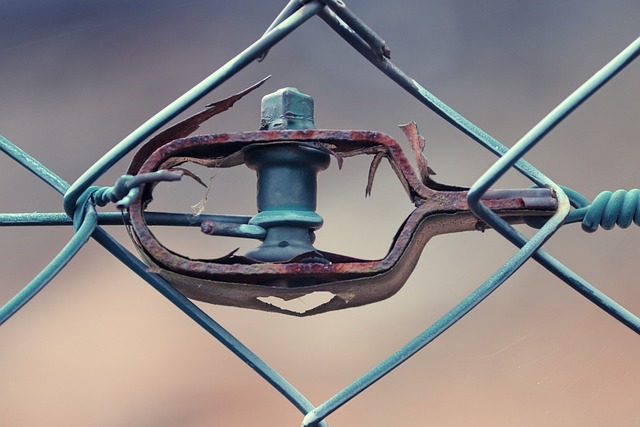Keep Your Large Property Safe & Stylish on a Budget: Cost-Effective Fencing Solutions
Managing a vast property comes with unique challenges, particularly when it comes to fencing. Traditional options can be prohibitively expensive for large landscapes. This article guides you through cost-effective fencing solutions tailored for expansive properties. We explore durable and low-cost materials, efficient design layouts, installation best practices for longevity, and maintenance strategies to ensure your fence remains a smart investment for years to come.
- Understanding Cost-Effective Fencing Needs for Large Properties
- Exploring Durable and Low-Cost Materials
- Designing Efficient Fencing Layouts
- Installation Tips for Longevity and Savings
- Maintenance Strategies to Extend Fence Lifespan
Understanding Cost-Effective Fencing Needs for Large Properties
Large properties present unique challenges when it comes to fencing, as the sheer size and diverse landscapes require tailored solutions. Understanding cost-effective fencing needs for these expansive areas involves considering both functional and aesthetic factors. The primary goal is often to establish clear boundaries while enhancing the property’s overall appeal. This balance between functionality and visual appeal can be achieved through strategic design choices, such as selecting suitable fence materials that offer durability and low maintenance.
Additionally, the layout of the property plays a significant role in determining the most efficient fencing system. For instance, uneven terrain might call for customizable fence designs, while straight lines may be more practical on level ground. Integrating security considerations is also essential, especially in rural areas prone to wildlife or unauthorized access. Cost-effective solutions should not compromise these safety aspects, ensuring a secure and visually pleasing boundary for large properties.
Exploring Durable and Low-Cost Materials
When it comes to fencing large properties, cost-effectiveness should be a primary concern while still ensuring durability. One of the best ways to achieve this is by exploring innovative and affordable materials that can stand the test of time. Modern technologies have introduced a range of synthetic options, such as high-density polyethylene (HDPE) and polyvinyl chloride (PVC), which offer exceptional strength and longevity at a fraction of the cost of traditional materials like wood or metal. These materials are highly durable, resistant to rot, rust, and pests, and require minimal maintenance.
Additionally, new developments in composite fencing materials combine the best properties of various elements, creating strong, long-lasting barriers. By choosing these materials, property owners can enjoy robust fences that provide privacy and security without breaking the bank. These cost-effective solutions are especially beneficial for large properties where extensive fencing is required, offering both visual appeal and practical benefits without compromising quality or longevity.
Designing Efficient Fencing Layouts
Designing efficient fencing layouts for large properties involves strategic planning to balance functionality, aesthetics, and cost-effectiveness. Start by assessing the property’s unique features, such as topography, existing vegetation, and structural elements. This initial analysis helps identify areas where a fence would be most beneficial or unnecessary, streamlining both installation and maintenance expenses.
Consider using flexible, modular fencing systems that can adapt to varied terrain without sacrificing durability. These systems often feature adjustable components, allowing for adjustments post-installation. Additionally, incorporating natural features like trees and existing fences into the design can reduce material costs and provide a seamless, aesthetically pleasing finish, enhancing the property’s overall value.
Installation Tips for Longevity and Savings
When installing fencing for large properties, a few strategic tips can significantly enhance longevity and reduce costs. First, plan your layout carefully to minimize material waste; straight runs with minimal bends usually result in less waste and lower expenses. Secondly, choose materials that are both durable and cost-effective, such as vinyl or wood, which require less maintenance than metal. Ensure proper soil preparation to anchor posts securely, preventing future shifting or damage.
Regular cleaning and inspection are vital. Remove debris and treat wood fences with preservatives annually to stave off rot and insect infestation. For vinyl, a simple annual wash is usually sufficient. Additionally, consider the placement of gates and posts strategically; well-designed access points enable easier maintenance and repair, preventing costly full-fenced replacements.
Maintenance Strategies to Extend Fence Lifespan
Regular maintenance is key to extending the lifespan of any fence, especially for large properties where fences often bear the brunt of weather conditions and potential damage from wildlife or passing traffic. A simple cleaning routine using a pressure washer or brush can help remove built-up dirt and debris, preventing rust and corrosion. Repainting or re-staining the fence periodically not only enhances its aesthetic appeal but also provides an additional layer of protection against the elements.
Additionally, checking for loose posts, boards, or rails on a regular basis is crucial. Quick repairs can prevent minor issues from escalating into major problems. Inspecting for signs of rot or damage caused by pests like termites or wood borers should also be part of the routine maintenance. Addressing these issues promptly will ensure the structural integrity of the fence and prolong its service life, ultimately saving on replacement costs.
